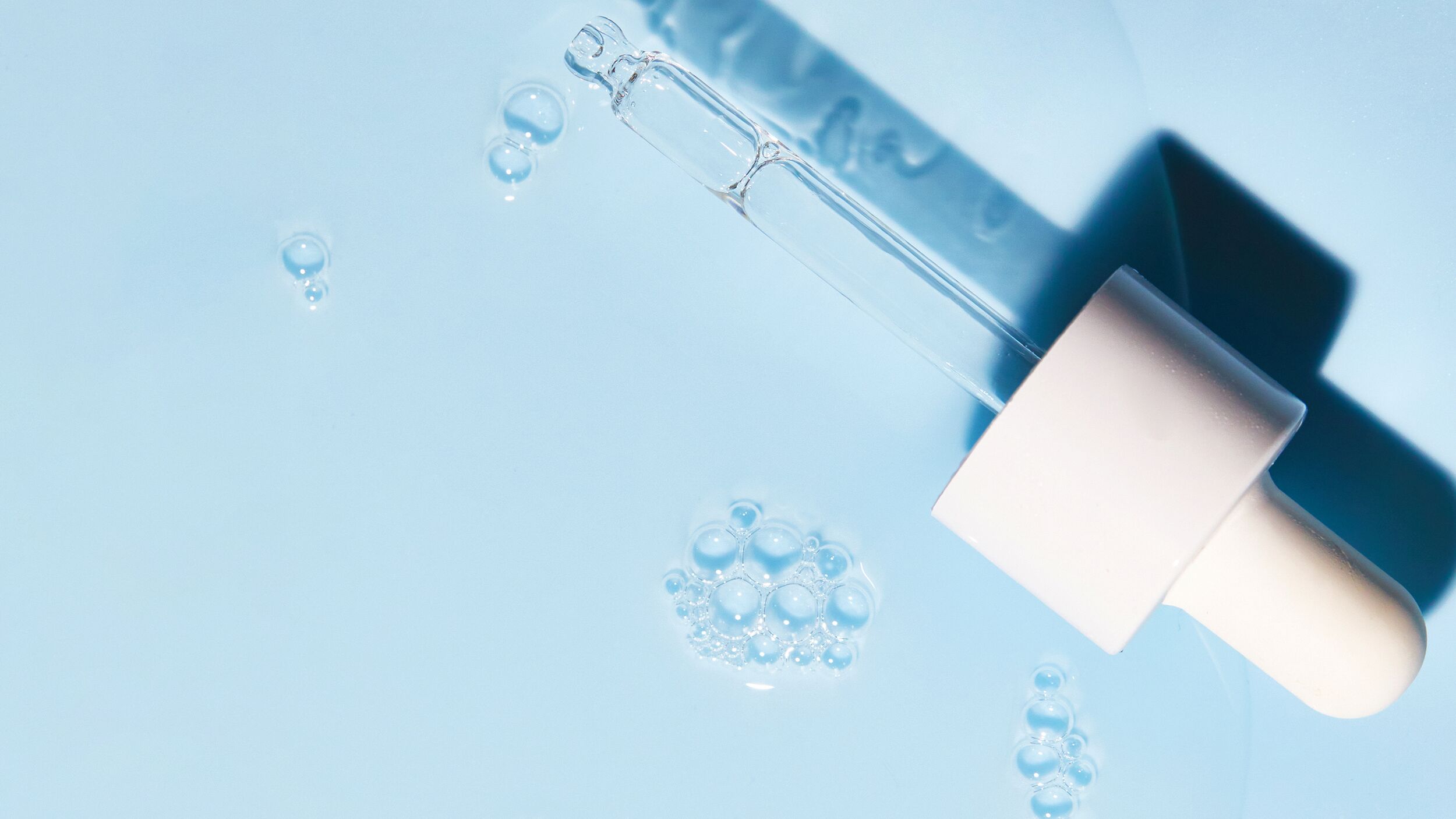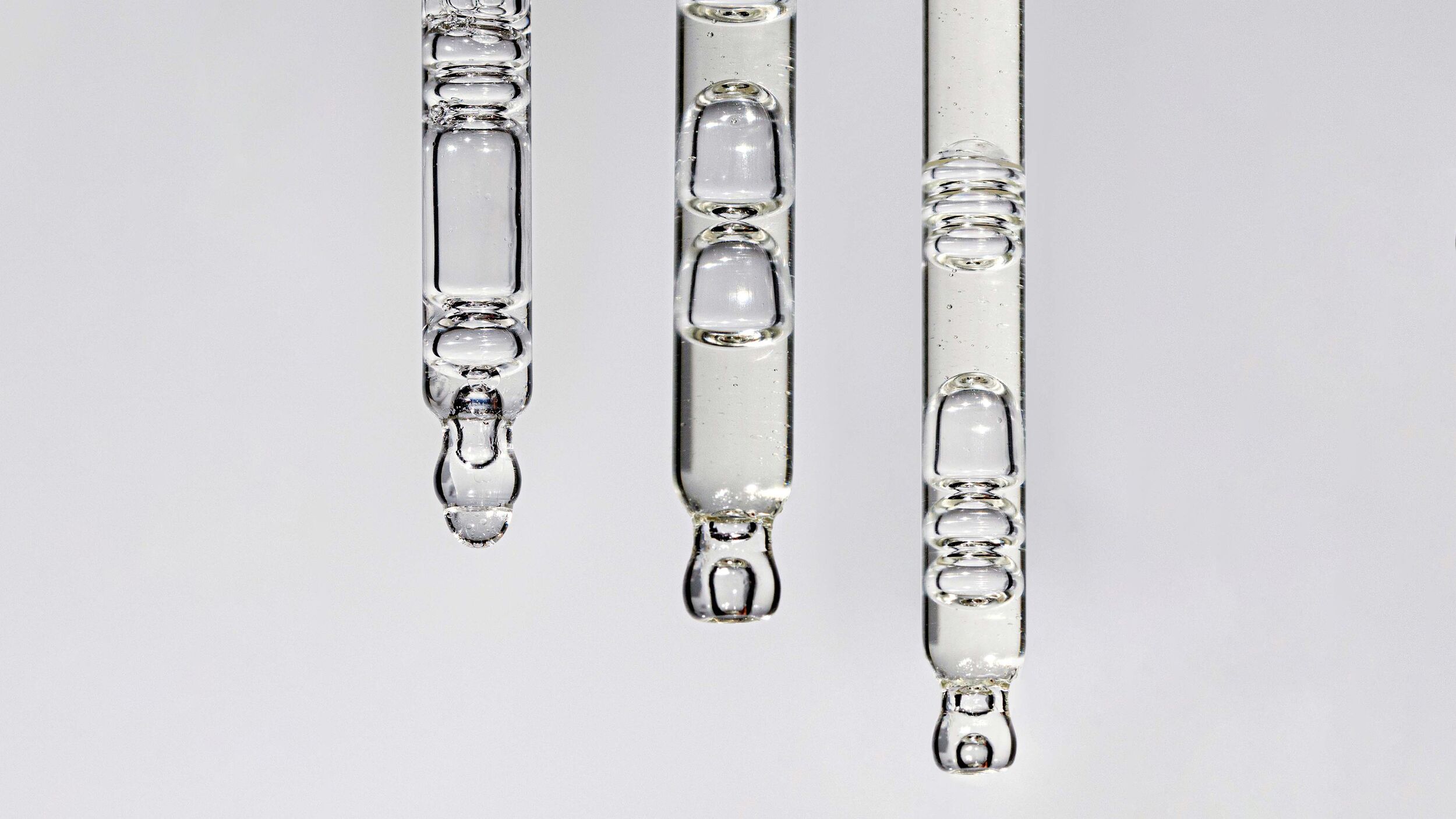
There are a lot of skincare ingredients out there. Here are the ones that are hot right now - and with good reason.
You’ll have seen them on skincare product ingredient listings. You’ll have heard them talked about by dermatologists and skincare experts. You’re probably using some of them already. But these three ingredients are getting serious skincare buzz right now - so we’ve broken each down into what they are, what they do, and who they’re best for.
Glycolic Acid

What is Glycolic Acid?
Glycolic Acid belongs to a family of ingredients called alpha-hydroxy acids (also known as AHAs), which are a type of liquid exfoliant. It’s the smallest AHA but also the strongest, with a mini molecule size that can penetrate deeper into the skin than its relatives like lactic, mandelic, and malic acids. Glycolic Acid occurs naturally in sugarcane, but many of the forms you find in your skincare will have been created in a lab. Find our more in the 'Truth About Glycolic Acid' blog.
Why is it trending?
Skin resurfacing is a growing trend, as people look for gentle-yet-effective ways to achieve and maintain that all-important skin glow. Instead of just a weekly scrub, people are looking for gentler daily ways to keep things smooooooooth.
How does it work?
So to recap: Glycolic Acid is a liquid (or chemical) exfoliant. Our skin has a natural renewal process and is constantly turning over cells to replace old ones with shiny new ones. But, as we age, during times of stress, or if your skin is very dry, this process slows and the skin holds onto those old, dulling cells for longer. Glycolic Acid works to speed up and regulate cell turnover by dissolving the bonds that hold no longer needed skin cells to the surface of our complexions.
This will not only make skin look brighter and feel softer but can also help to improve the appearance of things like congestion, hyperpigmentation, and fine lines. Equally important is the fact that with these old cells out of the way, the rest of our skincare products (like our serums and moisturisers) can penetrate the skin more easily and work harder.
Who should use Glycolic Acid?
It’s a good idea to use Glycolic Acid if you count lack of radiance, uneven skin tone, congestion, or fine lines among your most pressing skin concerns. You’ll also benefit if your skin is very dry. It’s common to try and use more moisturizer to compensate for rough, dry skin, but actually, exfoliation will make the biggest difference as suddenly the rest of your skincare will actually be able to access the skin. Glycolic Acid suits all skin types from oily and combination to dry and normal. It is suitable for all skin tones too, but the deeper your complexion, the more careful you need to be. Where irritation shows in fair skin as redness, it presents in deeper skin tones as hyperpigmentation. So, if you start using Glycolic Acid too regularly or in too high a dose without slowly building it up, you’re likely to cause more problems than you solve.
Glycolic Acid suits all skin types from oily and combination to dry and normal.
If you have very sensitive skin, Glycolic Acid probably isn’t the ingredient for you. It packs a punch that can be too harsh for skin that’s easily thrown off-kilter. Consider an AHA with a larger molecule size, like lactic acid, instead, or try a poly-hydroxy acid (thought of as AHAs gentler cousin) which works in the same way but at a much slower pace.
Where can I find them?
You can find Glycolic Acid in the following Beauty Pie products:
Dr Glycolic Multi-Acid Peeling Pads will help to resurface and renew skin that’s showing signs of dryness, congestion, and uneven texture.
Dr Glycolic Deep Purifying Foamy Clay Cleanser leaves your face feeling super fresh and (almost) squeaky clean. Use for a deep cleanse and a flash of brightness.
Peptides

What are Peptides?
Peptides are chains of amino acids that make up proteins like collagen and elastin. It’s a bit sciency, we know, but easier to understand if you picture it like a beaded necklace. The amino acids are the individual beads, the Peptides are a chain of a few beads strung together, and combining more than one of these mini chains will create the finished necklace – AKA a protein.
Why are they trending?
Peptides do a lot of very clever and quite complicated things, and while they’ve been include in high-performance skincare products for a good while, they’re starting to get recognised as the key to a lot of multi-pronged skincare benefits.
How does it work?
Let’s keep it as simple as possible: most of the peptides you’ll find in your skincare products are focused on increasing the amount of Collagen and elastin in your skin. These important proteins are what give our skin bounce and spring. Without them, skin can start to slacken and sag, leading to fine lines and wrinkles.
Peptides can work by encouraging the skin to make more Collagen, acting as a courier to carry Collagen to where it needs to be, and preventing Collagen from breaking down.
Peptides can work by encouraging the skin to make more Collagen, acting as a courier to carry Collagen to where it needs to be, and preventing Collagen from breaking down. Some Peptides can also halt the muscle contractions that cause expression lines – a bit like Botox in a bottle.
Who should use Peptides?
Peptides are brilliant ingredients for anyone who wants to firm their skin or smooth out fine lines and wrinkles. You’ll normally hear experts recommend Retinol as the first port of call for these types of concerns, but it is a strong ingredient that’s too harsh for sensitive skin. Peptides, on the other hand, are suitable for all skin types – even touchy and temperamental complexions.
If your skin is on the sensitive side, Peptides make for a skin-boosting alternative to retinol. If it isn’t, then you can use both together to supercharge their effects. Maybe you’re reading this and thinking that fine lines aren’t a concern for you just yet, but remember that prevention is always better than cure – and it’s never a bad idea to get ahead of the game. Our Collagen levels start to deplete from the age of 25 (yep, you read that right) so replenishing these stocks as early as possible will help in the long term.
Where can I find them?
You can find peptides in the following Beauty Pie products:
Triple Hyaluronic Acid Serum uses different weights of hyaluronic acid to flood all layers of the skin with moisture, plus a gravity-fighting peptide to lift and plump.
Über Youth Multi-Peptide H-Collagen Sheet Mask is a fast-track ticket to a dewier, bouncier complexion powered by more than 12 different peptides.
Youthbomb Biologic Collagen Peptide Cream is a moisturizer, but not as you know it. It’s packed with 18 active and supercharged ingredients (of which peptides are just one) to make skin look (and act) healthier, plumper, brighter and younger.
Ceramides

What are Ceramides?
Ceramides are a type of oily, waxy, fatty substance called a lipid. They exist naturally in our skin and make up a big part of it. They’re commonly used in skincare products aimed at dry, dehydrated, and sensitive skin to top up the skin’s levels. For a 'deep dive' into all things Ceramides, take a look at our 'Truth About Ceramides' blog.
Why are they trending?
Skin barrier - the protecting and bolstering thereof - has become huge in skincare recently, as we’ve collectively realised that no matter what happens at the deeper layers of your skin, if the surface is compromised, you might never achieve the results you want.
How do they work?
We think a lot about what our skin looks like, but really its key function is to act as a ‘gatekeeper’ that keeps the rest of our body safe. It’s designed to keep good stuff, like moisture, in, and bad stuff, like pollution and bacteria, out. The first line of defense is making sure that our skin cells are as neatly and tightly packed together as possible, so there are no gaps for anything to sneak in or escape from.
Ceramides play a key role in the skin’s barrier function as they act as the mortar that holds the skin cells (or bricks) together.
You might have heard the phrase skin barrier before, and it’s this that it’s referring to. Ceramides play a key role in the skin’s barrier function as they act as the mortar that holds the skin cells (or bricks) together. If you don’t have enough mortar, they won’t hold properly, and cracks will show, resulting in things like inflammation and dryness – neither of which are ideal.
Who should use Ceramides?
They say you can never have too much of a good thing, and that is very much the case with Ceramides. You’ll see the best results if your skin is dehydrated or dry, as they’ll help the skin hold onto water and oil, or if it’s sensitive, as a reinforced skin barrier will soothe inflammation and minimize the chance of future irritation.
Even if your skin is generally comfortable, making sure you’re supporting that barrier is always a good idea, as things like warm weather, UV exposure, and stress can all impact and impair it. The really good thing about Ceramides is that they’re compatible with all other skincare ingredients, so you’re not going to cause any problems by mixing and matching them with things like Vitamin C or Retinol.
Where can I find them?
You can find Ceramides in the following Beauty Pie products:
Pure Ceramides Elastic Boost Eye Moisture Serum is the antidote for under-eye skin that’s lost its ability to bounce back. By increasing suppleness and hydration, Ceramides help to restore spring.
Japanfusion Bio-Ceramide Moisture Mask harnesses Ceramides, squalane, and NMFission moisture-lock complex to quench the thirst of dry and dehydrated skin.


